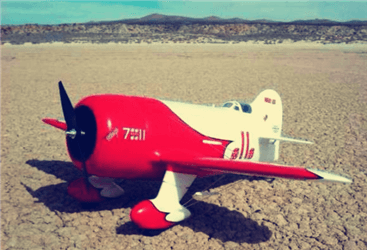
What is a fixed wing? A guide for beginner
The appearance of fixed wing is usually like a civil airliner. Most or all of the lift comes from the wing, which is fixed. In layman's terms: it has wings.
So how does Fixed wing fly?
Simply speaking, the lift comes from the wing, and the lift of the wing comes from the wing's airfoil and angle of attack. Then through simple physics, we find that the larger the angle of attack, the greater the lift, then the angle of attack is the nose lift Angle, then, if we let the plane raise its head, the lift will be greater, the plane will rise, and it will decrease as the speed increases.
Then we finished the "drift" side slip, another slightly more complicated, first rotate the x-axis (that is, an axis parallel to the fuselage) to let the plane come over, so that the lift of the wing is over, and then we need to pull the head of plane to made part of it back to the side, and then as we raised the elevation angle, the plane came over again, so we turned.

How to make the Fixed wing move?
We have talked about the principle of fixed wing, so let's talk about how to make the body move. The control of the aircraft is the pneumatic control surface, that is, the servo surface. There are two ailerons on each of the two wings, and there is a tail on the tail. The elevator (fixed wing with standard layout) has a servo on the vertical tail. Under normal circumstances, the servo surface is parallel to the wing (of course, the aileron may need to balance the torque, not to mention here) airflow flows through the wing and the rudder surface, then the rudder surface is part of the wing, when we need to maneuver, it is controlled by the steering gear, so the rudder surface deflects up and down, and the lift changes.
For example, the rear elevator deflects upwards, which generates a downward force. Since the center is near the wing, the aircraft becomes a lever, the tail drops, The head rises, so the plane is pulled up, and the ailerons rise while falling, so the plane rolls, and so on.
After finishing the control part, this is a basic fixed wing. So how to fly?
Then it is divided into unpowered gliders and powered. For unpowered, if there is a chance, we will talk about it later.Because it is not suitable for beginner. So we have power, which is divided into internal combustion engine and electric (not mention turbojet here). The internal combustion engine is not suitable for beginners, and there are fewer people playing now.
Then we say electric, electric is divided into two categories: propeller plane and EDF. The EDF is not introduced here, because it is very unsuitable for beginners (of course, it is possible if you want to start, just need to be prepared for frequent repairs or even scrap) .

So let's talk about electric propeller propulsion, which is divided into two categories, with and without brushes.
Then everyone knows the principle of the motor. The current generates a magnetic field and changes the magnetic field through the brush. So, the motor rotates. This is a brush motor. This motor has many disadvantages, poor power, etc. due to the brush. Now few people use it.
We mainly talk about brushless. It has the same principle as a brushed motor. The difference is that it does not have a brush. It switches the current direction and speed through an electronic speed regulator. In other words, the motor is connected to the ESC, the ESC is connected to the receiver, the receiver sends the signal to the ESC, and the ESC lets the control motor turn.
So, where does the power of the motor come from? From the ESC, where does the power of the ESC come from?
It is power battery (usually lipo battery, because the power is better). The rotation of the motor drives the rotation of the paddle, so there is thrust, then there is speed, and then there is air flow through the wings and rudder surface, so you can fly up and control the aircraft.
Here, you cannot help but ask a question: Where does the power of the steering gear come from?
The answer is: In most cases, the power voltage is reduced by the ESC and sent to the receiver. The receiver sends the signal to the steering gear while sending the power to the steering gear, that is, once the ESC is damaged , Your aircraft will lose all control, and in all rare cases, it will be equipped with a dedicated power supply.

Note:
After talking about the principle and structure of the fixed wing, As a beginner, we should pay attention to when choosing a plane, there is no conditioned reflex, the machine is definitely easy to explode and destroy, so we need a low-speed training machine with explosion-proof. As for the brand, just according to your preferences.
If you are not clear about the types of aircraft, this article can also help you:
https://www.ovonicshop.com/blogs/buying-guide/different-types-of-rc-aircraft


Leave a comment